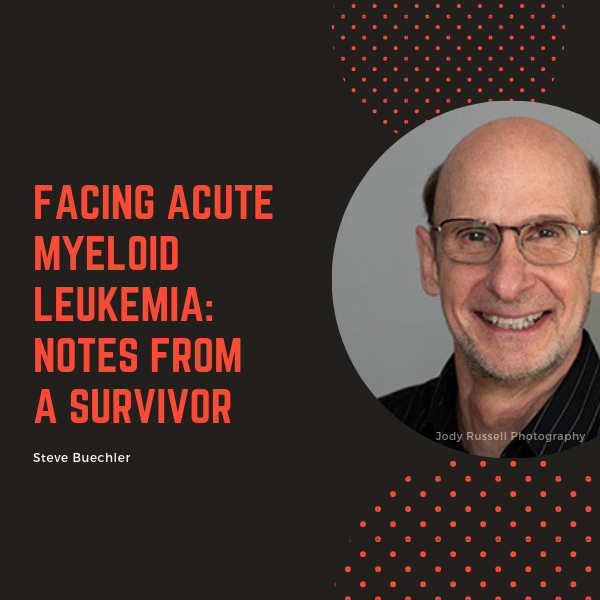Chronic Lymphocytic Leukemia Research and EVOLVE Trial Updates
Chronic Lymphocytic Leukemia Research and EVOLVE Trial Updates from Patient Empowerment Network on Vimeo.
What’s the latest in chronic lymphocytic leukemia (CLL) research? Expert Dr. Danielle Brander shares research updates and an update about the EVOLVE trial by the SWOG cooperative group.
Dr. Danielle Brander is an Assistant Professor in the Division of Hematologic Malignancies & Cellular Therapy at Duke University Medical Center. Learn more about Dr. Danielle Brander.
Download Resource Guide | Descargar Guía en Español
Related Programs:

Chronic Lymphocytic Leukemia Prognosis and Treatment Factors |

Common Chronic Lymphocytic Leukemia Symptoms and Follow-Up Tests |
Transcript:
Lisa Hatfield:
Can you talk a little bit about the novel pathways and targets that are currently under investigation in CLL, and what are the most important highlights from those for patients and their families and care partners?
Dr. Danielle Brander:
Yes. So over the last decade or even the last five years, for patients diagnosed with CLL, there’s been a very encouraging and market change in the available treatments that is, you know, not that many years ago we generally only had chemotherapy or chemotherapy combined with these antibody targeted treatments that we call immunotherapy sometimes.
But in the last 5 to 10 years we’ve seen quite a remarkable change in treatments that target, meaning often they go after pathways or ways that the CLL cells have learned to grow or have learned to not die the way that normal cells should, die after certain time points. The two main categories of treatments that are approved for CLL treatment, either for patients as a first treatment or patients that have had treatment before including prior chemo or other agents are called BTK inhibitors or BCL-2 inhibitors.
BTK is something inside the leukemia cells. It’s also in some of our other cells. But in the CLL cells particularly, they’re very sensitive in needing that protein. So in targeting that BTK inhibitors keep the cells from getting the normal signals that they need to stay alive, and so the lymph nodes that are big get smaller, a spleen that might be big get smaller, white count eventually comes back down, for example.
And those BTK inhibitors have also already encouragingly changed over recent years. So there was…you’ll hear people say first generation, these were the first inhibitors that came out, that was a drug called ibrutinib (Imbruvica), which is still around. And then there are second generation that are approved that have come out as first treatment or treatment for previously patients that receive treatment.
Those second-generation BTK inhibitors are called zanubrutinib (Brukinsa) and acalabrutinib (Calquence) that are approved. The main other approved category of these targeted treatments I mentioned is venetoclax based treatment. And that targets something different, that targets a set of proteins inside the cell that tell the cell to stay alive too long. And so you have this accumulation and venetoclax targets that pathway. And the last thing I’ll mention about the BTK inhibitors that’s emerging is now there are trials of what are called non-covalent BTK inhibitors.
So they work in a different way, they go after BTK and so that they can work. The non-covalent, even for patients where the first and second-generation, traditional covalent BTK inhibitors I mentioned stop working, those are not yet approved officially for CLL, though they’re approved in mantle cell lymphoma. That’s a drug called pirtobrutinib (Jaypirca), that’s a non-covalent BTK. And the reason that emerging set of treatment, as I mentioned, is important is because it can work for patients where the first or second-generation covalent BTK inhibitors stop working. The venetoclax (Venclexta), as I mentioned, works by a different mechanism. So patients, of course, where the BTK stopped working, in many cases venetoclax can be helpful as well.
Lisa Hatfield:
So I read a little bit, I did a little research on trials that you’re involved in, and there is a trial the EVOLVE CLL trial, and I wonder if you can talk about that a little bit because I think it is exciting for patients to hear that there might be an option for earlier intervention. And I’m not sure if you’re allowed to talk about any results yet, but if you can speak to results, that would be great to hear about those results too.
Dr. Danielle Brander:
Well, yes and no, thank you for bringing this up because this is very important. As you mentioned, it’s called the EVOLVE study. It’s led by a national cooperative group called SWOG, meaning there are lots of places that it’s available, not just larger centers, but smaller oncology centers as well. And this is to look at what’s called early intervention, meaning as we spoke about before, most patients with CLL don’t need treatment at the time that they’re diagnosed.
The reasons for treatment are, we call those treatment indications are based on three main categories that I’ll just review. For some patients, it’s new or progressive symptoms like weight loss or, very symptomatic limiting life day-to-day activities like night sweats or fatigue, for example, that’s the first category of reasons some patients might need treatment is unmanageable side effects.
The second main category is if the lymph nodes get very large or impacting on organ function, or the same for the spleen, it’s getting very large to a certain size, or it’s affecting your ability to eat regular meals or losing weight. And then the last category of treatment indications that we generally wait to start treatment for are if it’s affecting the normal blood count.
So there’s not one magic white count where patients need to start treatment, but almost like weeds in a garden, if those CLL cells are crowding out the red blood cells, so the hemoglobin’s falling or it’s crowding out the platelets, so the platelets are crowding and can’t grow and reach a certain threshold, then we recommend treatment. Of course, there are scattered other reasons, but those are the main three categories. And the reason of waiting to start until those are met is because historically trials have been done to look at waiting for those indications versus treating around the time of diagnosis.
Those trials so far have included, chemotherapy by itself or chemotherapy in combination. And most recently there was a trial looking at first-generation ibrutinib that was given continuously. And so far there’s been no survival. So no life expectancy benefit to early treatment versus waiting for those indications. And the other reason generally not treating all patients is because some patients never require treatment, about a quarter of patients.
So if we offer treatment to everybody, at the time of diagnosis, there are patients that would get treatment that would be exposed to side effects and never needed. But what the EVOLVE study is uniquely looking at is randomizing. And randomizing means some patients will get treatment and some patients will wait until those traditional reasons to need treatment. But for those randomized to receive therapy, it’s that venetoclax based treatment combined with this antibody called obinutuzumab (Gazyva).
And the way that treatment is given for patients, is the same way it’s given for patients who outside of the trial need treatment, meaning they get the antibody infusion, then they get the venetoclax pill, but it’s for a fixed duration, meaning a total of one year of treatment. The trial is also only for patients with higher-risk CLL. So as I mentioned, some patients never need treatment, some patients do, some patients need it quicker.
So rather than looking at this trial and saying all patients, including those with CLL, that’s likely to be slower-growing. The EVOLVE trial is only for patients who are more likely to need treatment in the next couple of years. And the way that’s determined is a score called the CLL-IPI score, and CLL-IPI tries to identify patients more likely to need treatment in the next couple of years by a couple of key factors.
Stage at the time of diagnosis, it looks at age, and it looks at key factors of the leukemia itself, including something called deletion 17P or TP53, because that marker in the cells is a high risk of eventually needing treatment. So to answer your question, what EVOLVE is looking at is taking higher-risk patients, so patients rather than all patients more likely to need treatment anyway, and around the time of diagnosis, randomizing to either be treated or to follow the traditional, sometimes called watch and wait or dynamic monitoring until they reach traditional markers. And ultimately, and it’ll likely take many years to look at, ultimately the question is looking at if that helps prolong patient survival by having higher-risk patients receive that fixed-duration treatment earlier in time. We don’t yet have any results or any results to share, because the study is still enrolling.
Dr. Danielle Brander:
But again, I think it’s something for patients to be aware of, because it does look at the higher risk patients. But around a year, it has to be within a year of diagnosis. So patients who are newly diagnosed, the question to ask your oncology team is “Do I qualify?” if it’s something you’re interested for, and they’ll help walk you through that. If you haven’t had markers checked, for example, it might be a good time to ask about that, to see if this is something would be available, even if not available though, it does create a time to talk to your team about the markers, because those can inform regardless of trial or not maybe what to expect in coming years and likelihood of treatment.
Share Your Feedback
Create your own user feedback survey











